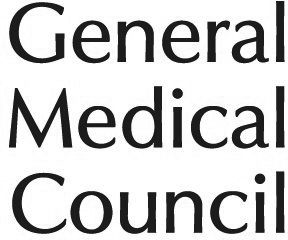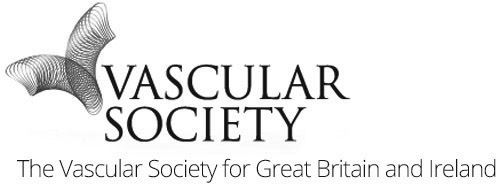Miss Nung Rudarakanchana, Consultant Vascular & Endovascular Surgeon
Miss Nung Rudarakanchana
Consultant Vascular & Endovascular Surgeon
Miss Nung Rudarakanchana MB BChir MA (Hons) (Cantab), PhD (Cantab), FRCS (Gen Surg) (Eng)
Consultant Vascular & Endovascular Surgeon
Miss Nung Rudarakanchana
Consultant Vascular & Endovascular Surgeon MB BChir MA (Hons) (Cantab), PhD (Cantab), FRCS (Gen Surg) (Eng)
Make an appointment
Address
-
Golders Green Outpatients and Diagnostics Centre
Roman House, 296 Golders Green Road, Golders Green, London, NW11 9PY
-
The Wellington Hospital
Wellington Place, St John's Wood, London, NW8 9LE
About Miss Nung Rudarakanchana
Miss Nung Rudarakanchana is Consultant in Vascular and Endovascular Surgery at London North West University Hospitals NHS Trust. She also runs a private practice at The London Clinic, Wellington Hospital and Clementine Churchill Hospital. She has over 15 years of experience in management of varicose veins using minimally invasive techniques and has treated over 2,000 patients. Her clinical interests include aortic aneurysm and dissection, peripheral arterial disease and diabetic foot management (including complex wound management), carotid artery disease and TIAs/stroke, venous disease (including varicose veins, pelvic congestion and post-thrombotic limb), lymphoedema, thoracic outlet syndrome and women’s cardiovascular risk management. She undertakes both open and endovascular procedures, including complex endovascular aortic repair and lower limb angioplasty.
Born and raised in Oxford, Miss Rudarakanchana qualified from the Cambridge University MB PhD programme in 2004 and was awarded the Lewin Prize in Surgery. She won numerous scholarships and fellowships during her PhD research in vascular cell biology, including the British Federation of Women Graduates Spurgeon Scholarship and the Magdalene College Donaldson Bye-Fellowship. She gained specialist training in open and endovascular repair of complex aortic disease at St Mary’s Hospital and the Royal Free Hospital and completed an Advanced Endovascular Fellowship in lower limb arterial disease and diabetic foot management at St Thomas’ Hospital.
Miss Rudarakanchana was appointed as a NIHR Clinical Lecturer in 2011 at Imperial College, where her research interests included endovascular skills training using immersive virtual reality simulation, optimization of endovascular surgery through procedure rehearsal, the use of cerebral embolic protection devices during endovascular aortic repair, and the metabonomics of aortic disease. She is currently investigating the use of personalised nutrigenomics to reduce cardiovascular risk. She has published extensively in the field and is regularly invited to lecture at prestigious international conferences. She is an invited reviewer for the British Journal of Surgery and the European Journal of Vascular & Endovascular Surgery Her research has generated half a million pounds in grants and won prizes in the UK, Europe and the USA.
Miss Rudarakanchana is a trained educational supervisor and has supervised BSc and PhD degrees. She has designed and delivered courses in endovascular skill training in the UK and USA. She is the Vascular Lead for the NHS London Diabetic Foot Network and holds a Masters in Healthcare Finance and Management.
Miss Rudarakanchana is a keen skier, a qualified sommelier and an amateur cellist. Her greatest sporting achievement was winning Blades at Cambridge. She now enjoys sweating it out in hot yoga classes and running around after dogs in Primrose Hill and Regent’s Park, where she lives.
Areas of expertise
- Angioplasty
- Aortic aneurysm and dissection
- Arteriovenous malformation avm
- Carotid artery disease & vascular tias or stroke (carotid endarterectomy)
- Cervical rib, thoracic outlet syndrome
- Deep venous insufficiency
- Deep venous thrombosis
- Diabetic foot management including complex wound management
- Endovascular aortic repair
- Endovenous laser ablation
- Foot ulcers
- Leg swelling
- Leg ulcers
- Lower limb vascular bypass
- Lymphoedema
- May thurner syndrome (venoplasty and vascular stents)
- Open aortic surgery
- Pelvic congestion syndrome
- Pelvic vein embolisation
- Peripheral vascular disease
- Post-thrombotic syndrome
- Raynaud’s syndrome
- Renal and intestinal vascular disease
- Sclerotherapy
- Superficial venous insufficiency
- Varicose veins, spider, thread and reticular veins
- Vascular access
- Vascular risk management
- Vascular stents
- Vasculitis
- Vasospastic disorder
- Venous ulcers
Professional memberships



Articles by Miss Nung Rudarakanchana
Cerebral embolization, silent cerebral infarction and neurocognitive decline after thoracic endovascular aortic repair
How Can We Ensure Vascular Surgical Trainees Become Competent in Open Aortic Surgery in the Future Training Environment?
 Instant booking
Instant booking














